Living with jaw pain can impact every part of your life—from the way you eat to the way you speak and even how you sleep. Temporomandibular joint disorders (TMJ disorders or TMD) can range from mildly uncomfortable to downright debilitating, often leaving those affected overwhelmed and struggling to find relief.
A first step toward relief is understanding what TMJ is, where to go to get a diagnosis of the condition, and most importantly, who treats TMJ dysfunction effectively.
What is TMJ?
Not all jaw pain is automatically linked to TMD. Just as carpal tunnel syndrome is just one type of wrist pain, TMD is just one of several specific dysfunctions of the temporomandibular joint. Jaw pain can also result from:
- Grinding or clenching your teeth (also called bruxism)
- Arthritis in the jaw
- Trauma or injuries to the jaw
- Stress causing muscle tension in the jaw
- Dental alignment issues
The pathology of TMJ disorder often includes issues like inflammation, damage to the cartilage, or even misalignment within the joint. Symptoms include:
- Pain or tenderness in the jaw
- Clicking, popping, or grinding sounds in the jaw when moving it
- Difficulty chewing or talking
- Locked jaw, making it hard to open or close your mouth fully
If you’ve been experiencing these symptoms, a proper diagnosis is key to finding an effective treatment.
Who can diagnose temporomandibular joint disorder?
Diagnosing TMD requires a thorough evaluation from a healthcare provider. This process often includes:
- A physical exam of the jaw, checking for tenderness, range of motion, and unusual sounds
- Imaging tests, such as X-rays, MRIs, or CT scans, to get a closer look at the joint, muscles, and surrounding structures
- A review of your medical history, including other potential contributing factors like stress, teeth grinding, or past jaw injuries
While your typical primary care physician may provide an initial assessment, you’ll likely need to see a specialist to confirm the diagnosis. However, you can start seeking treatment for jaw pain without a referral if you are in need of relief quickly.
Who treats TMJ dysfunction?
A variety of healthcare professionals can treat TMJ disorders in different ways. But knowing your options allows you to pick a provider based on the factors that matter most to you, including the cost and availability of treatment.
Physical therapy is one of the most accessible and non-invasive treatments for TMJ dysfunction. A skilled physical therapist can:
- Teach you exercises to improve jaw alignment and mobility
- Address related pain in the neck, shoulders, and head
- Recommend strategies to reduce joint strain during daily activities like talking or chewing
Physical therapy is particularly effective because it provides a holistic approach. Addressing the muscles and mechanics around the temporomandibular joint often relieves more than just jaw pain, helping with headaches, neck pain, and posture-related discomfort. All of this can be done without a doctor’s referral and with an emphasis on non-surgical and non-medicated solutions.
Physical therapy for jaw pain and TMJ disorder in North Carolina
If you’re searching for someone who treats TMJ dysfunction in North Carolina, Carolina Strong Physical Therapy offers personalized, non-surgical solutions for jaw and TMJ pain. Our expert team is trained in relieving TMD symptoms while addressing related discomfort in the neck, shoulders, and upper body.
Start on the path toward lesser pain in your neck and jaw by calling one of our clinics or by requesting your first appointment online today.

